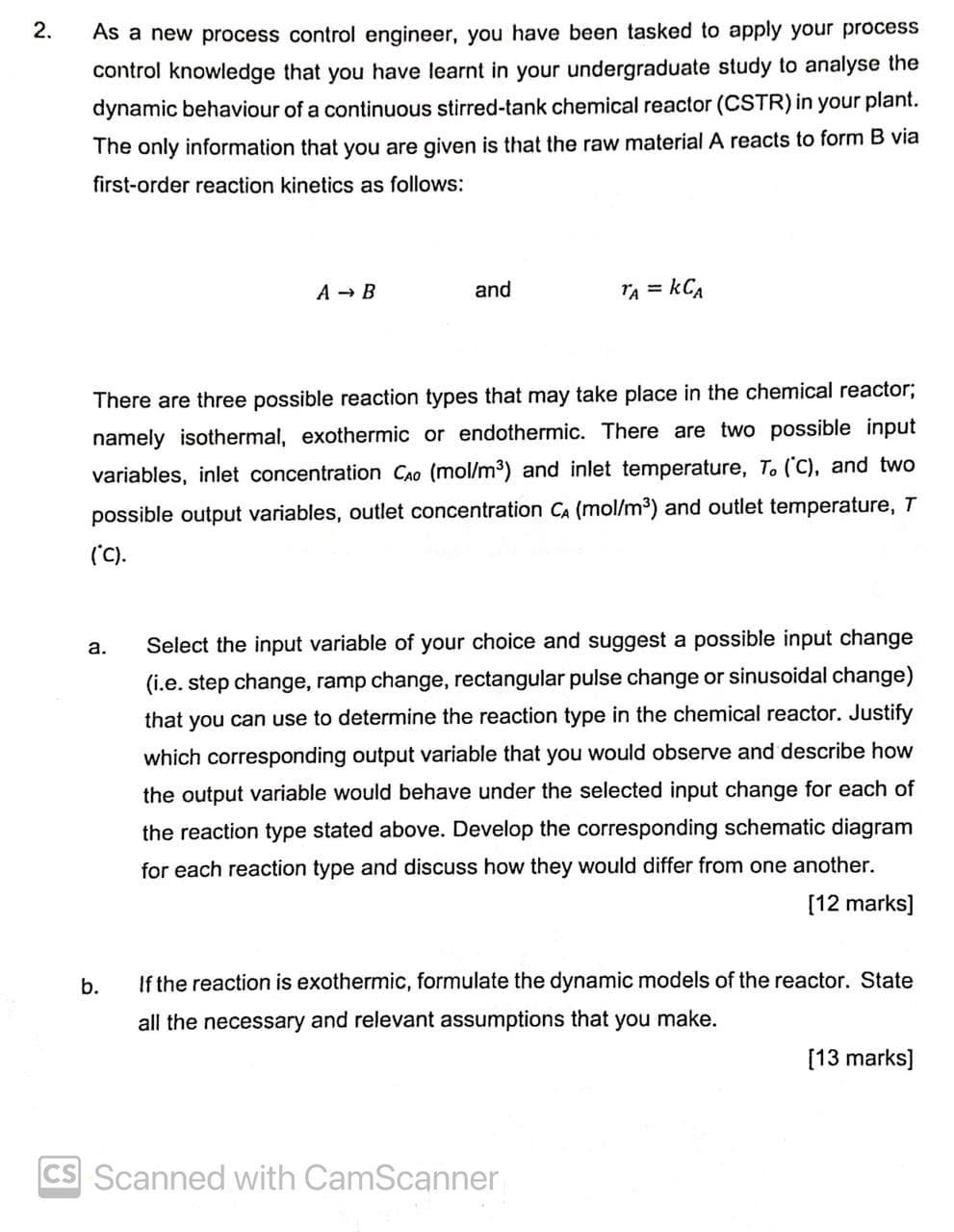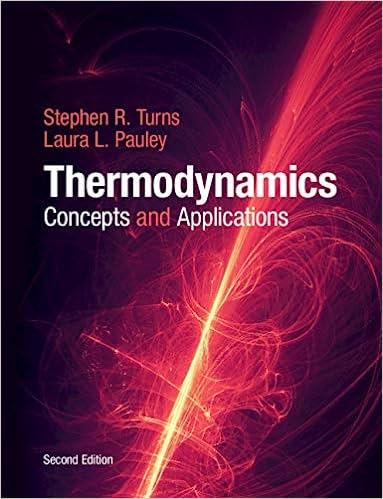
2. As a new process control engineer, you have been tasked to apply your process control knowledge that you have learnt in your undergraduate study to analyse the dynamic behaviour of a continuous stirred-tank chemical reactor (CSTR) in your plant. The only information that you are given is that the raw material A reacts to form B via first-order reaction kinetics as follows: A - B and TA = kCA There are three possible reaction types that may take place in the chemical reactor; namely isothermal, exothermic or endothermic. There are two possible input variables, inlet concentration Cao (mol/m) and inlet temperature, T. (C), and two possible output variables, outlet concentration CA (mol/m) and outlet temperature, T (C). a. Select the input variable of your choice and suggest a possible input change (i.e. step change, ramp change, rectangular pulse change or sinusoidal change) that you can use to determine the reaction type in the chemical reactor. Justify which corresponding output variable that you would observe and describe how the output variable would behave under the selected input change for each of the reaction type stated above. Develop the corresponding schematic diagram for each reaction type and discuss how they would differ from one another. (12 marks] b. If the reaction is exothermic, formulate the dynamic models of the reactor. State all the necessary and relevant assumptions that you make. (13 marks] CS Scanned with CamScanner 2. As a new process control engineer, you have been tasked to apply your process control knowledge that you have learnt in your undergraduate study to analyse the dynamic behaviour of a continuous stirred-tank chemical reactor (CSTR) in your plant. The only information that you are given is that the raw material A reacts to form B via first-order reaction kinetics as follows: A - B and TA = kCA There are three possible reaction types that may take place in the chemical reactor; namely isothermal, exothermic or endothermic. There are two possible input variables, inlet concentration Cao (mol/m) and inlet temperature, T. (C), and two possible output variables, outlet concentration CA (mol/m) and outlet temperature, T (C). a. Select the input variable of your choice and suggest a possible input change (i.e. step change, ramp change, rectangular pulse change or sinusoidal change) that you can use to determine the reaction type in the chemical reactor. Justify which corresponding output variable that you would observe and describe how the output variable would behave under the selected input change for each of the reaction type stated above. Develop the corresponding schematic diagram for each reaction type and discuss how they would differ from one another. (12 marks] b. If the reaction is exothermic, formulate the dynamic models of the reactor. State all the necessary and relevant assumptions that you make. (13 marks] CS Scanned with CamScanner







